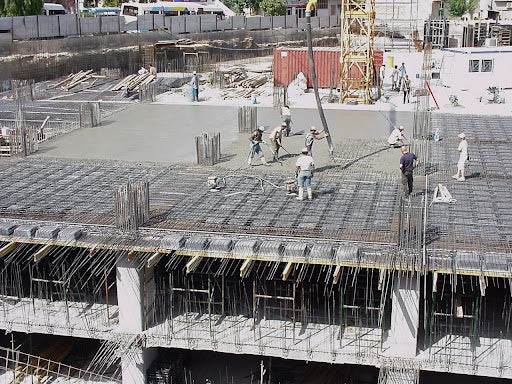
Basically, a pile cap is a thick concrete mat. This mat can be found on concrete or wooden stakes and these stakes are driven into unstable ground, or soft ground, to create a stable base. The concrete block will then distribute the entire load of the building.
The dimensions of the pile caps are determined by the loads and the arrangement of the structure and foundation connections. The shape of the block is determined by the number of piles within the group and the spacing between each of the piles.
The depth of the block also has several determining factors. These factors include punching punch, pile anchorage, soil shrinkage and swelling, amount of frost, and water table.
Pile blocks also use secondary reinforcement so that the piles do not move out of each of the blocks. One of the secondary reinforcements is located at the bottom of the block and surrounds the longitudinal reinforcement. The other is to change the direction at the top of the stacks.
One of the best ways to design pile caps is in SAFE , which is an excellent design tool. There are six steps to designing pile caps in SAFE, which isn't a lot considering the importance of the pile caps.
The six steps to designing pile caps in SAFE:
- Determine Column and Wall Load Assignment
To create blocks on piles, you must know what is needed for the foundation. This means you must know where the columns and walls will be located and where the load from each of them will be needed. Although you can do all of this manually, it is always better to use a 3D analysis model. This information can then be imported into SAFE so you can see all the different vertical and lateral forces. This will ensure you know where all dead and dynamic loads are located and where pile caps will be needed.
- Determine which pile cap to use
You will need to follow all local codes and standards when determining which pile cap to use. There is a basic formula to be used in calculating the number of batteries. This formula is that the number of piles is equal to the working load divided by the pile capacity. You can then mark the block type in a layout so you can see where the blocks should be.
- Model the pile caps
Modeling pile caps is easy in SAFE, especially if you use the dxf import feature. If you choose to do this manually in SAFE, it will take much longer.
- Perform analysis and design
Once you have finished modeling the block, you will need to mark the x and y for directions. After that, you can finally run an analysis and design for review.
- Reviewing the analysis
When reviewing your analysis, you should keep an eye out for any anomalies that were created with your soil report.
- Interpret all your results
The reinforcement results will show where the blocks need to be, as well as where strip forces will be needed. The slab strip drawing will also show where reinforcement is needed near the reinforcement.
If you have never made blocks on stilts before, you should know the three most common shapes. The first is triangular, which is used for three stakes. Six or seven stakes will need a hexagonal block, while a rectangular block is used for all other numbers of stakes.
When it comes to pile diameters and block depth, check the numbers below:
Diameters of piles in mm Depth of blocks in mm
300 700
350 800
400 900
450 1,000
500 1,100
550 1,200
600 1,400
750 1,800
These pile cap depths are the most effective for the diameters they are associated with. Therefore, you should use them as recommendations when creating pile caps in the future.
Piling blocks can be very useful in keeping buildings more stable than they would be without them. Therefore, when you are constructing newer buildings or renovating older buildings, you will want to utilize pile caps to ensure the building is as stable as possible.

